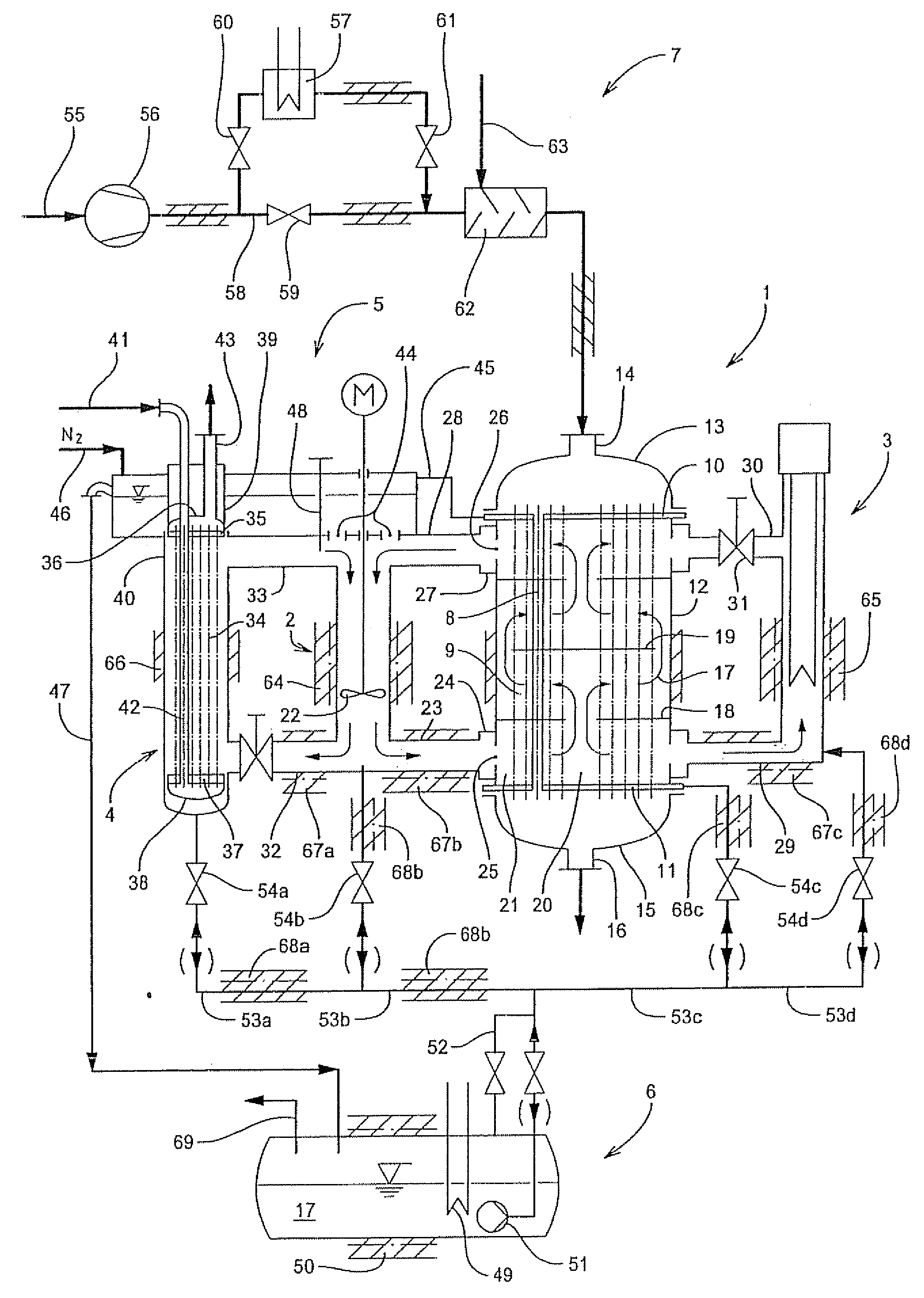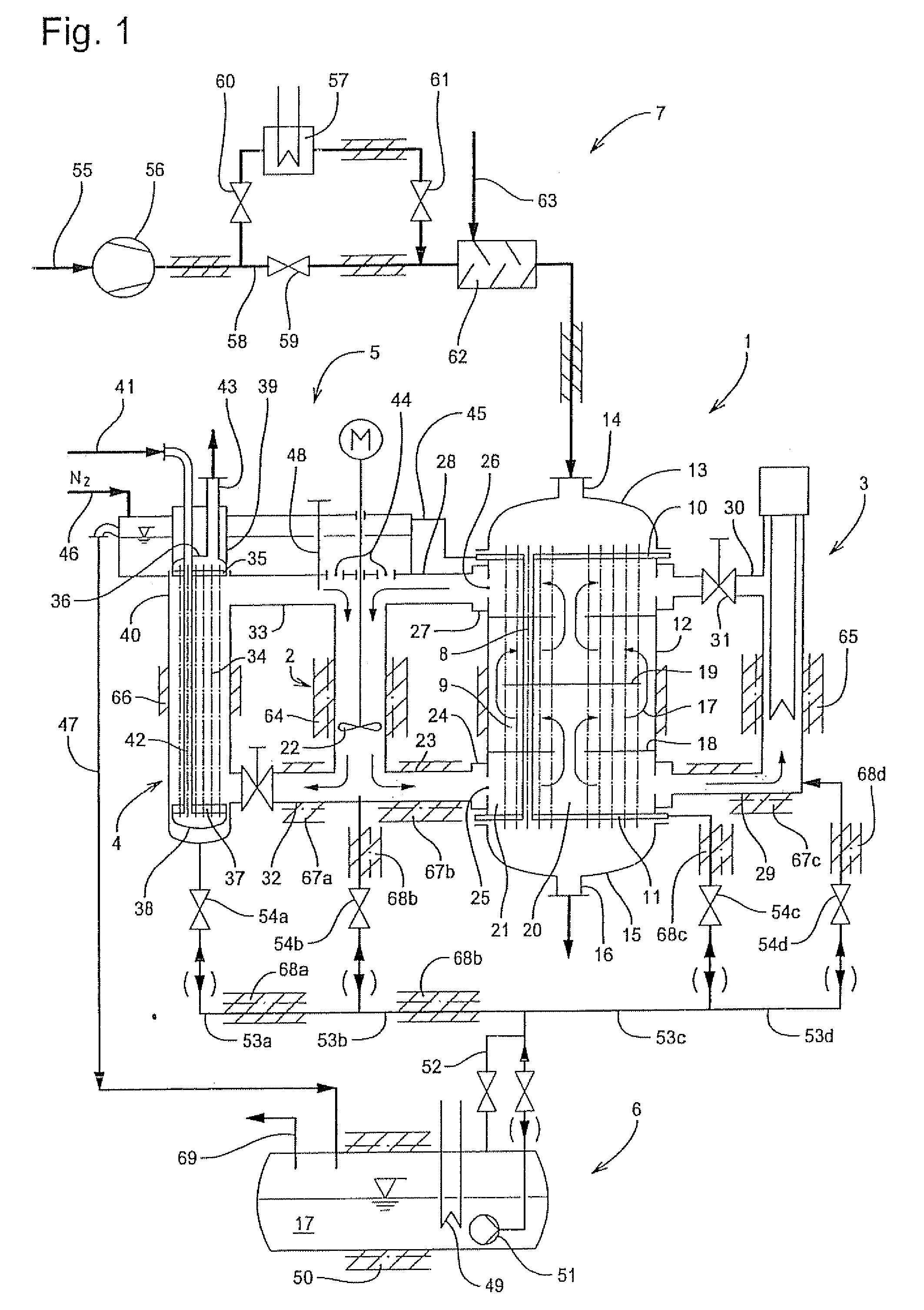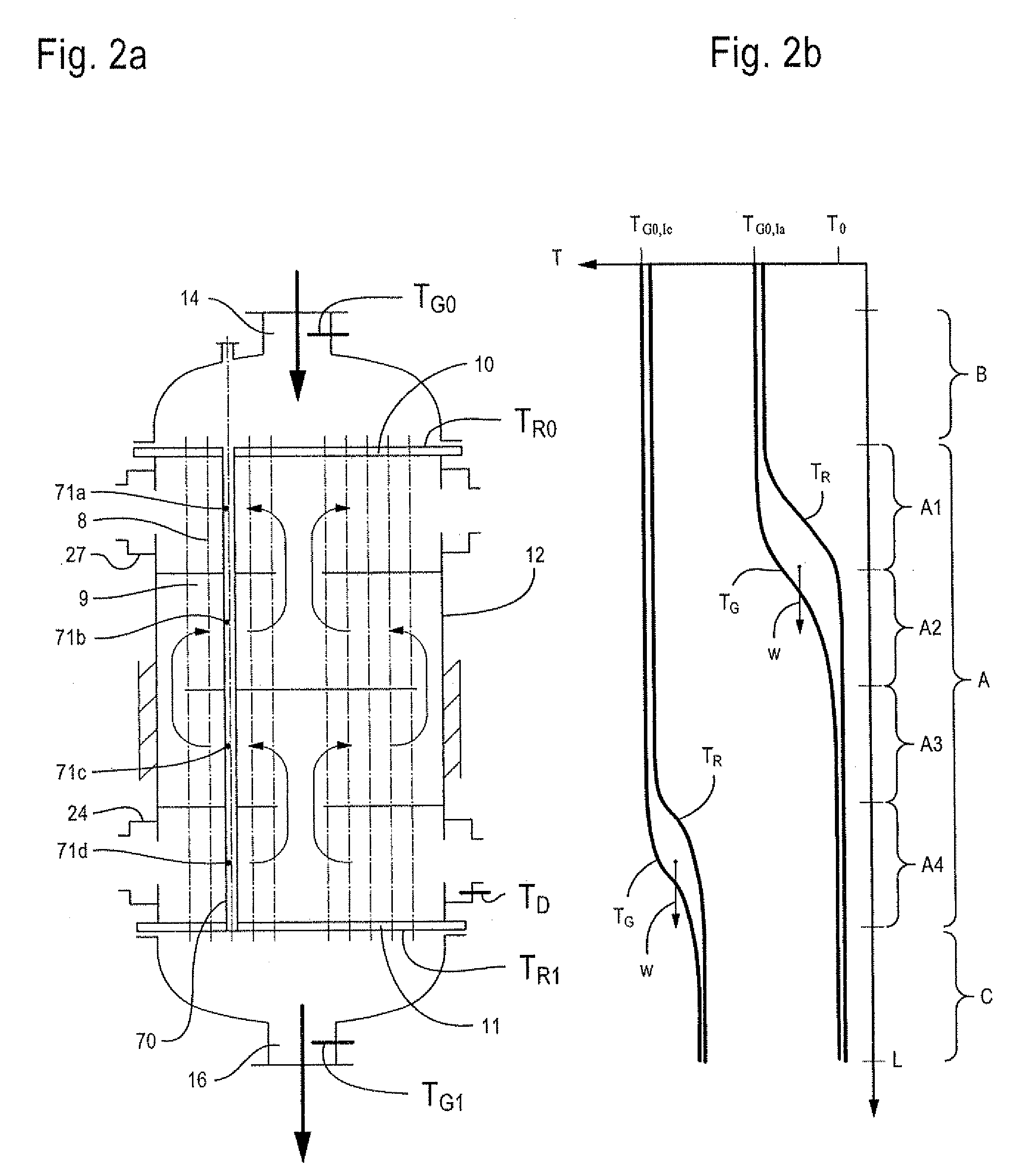Method of varying the temperature of a tube bundle reactor
a technology of a tube bundle and a reactor, which is applied in the direction of indirect heat exchangers, lighting and heating apparatus, and tubular conduit assemblies. it can solve the problems of high investment costs, high cost of heating units and accessories, undue deformation or even cracking of surrounding walls, etc., and achieves the effect of prolonging the life, simple mechanical outfitting of the reactor system, and easy and reliable operation
- Summary
- Abstract
- Description
- Claims
- Application Information
AI Technical Summary
Benefits of technology
Problems solved by technology
Method used
Image
Examples
first embodiment
[0219]FIG. 1 illustrates a reactor system for the method according to the invention. The reactor system is designed for exothermic gas phase reactions. The heat transfer medium used is salt. The principal component parts of this reactor system, shown as an example, essentially are a single-zone reactor 1, a circulating means 2, a heat-up means 3, a cooler 4, an expansion tank 5, a salt tank 6, and a gas treatment apparatus 7 for producing a temperature gas and a reaction gas mixture, respectively.
[0220] In the embodiment illustrated, the reactor 1 is embodied by a tube bundle reactor. It comprises a plurality of catalyst-filled reactor tubes 8 which form a tube bundle 9. The reactor tubes 8 terminate in sealed fashion in an upper tubesheet 10 and in a lower tubesheet 11. The tube bundle 9 is enclosed by an insulated shell 12 connected to the upper tubesheet 10 and the lower tubesheet 11. If desired, the shell 12 may comprise compensators (not shown) for accommodating thermal stresse...
second embodiment
[0260]FIG. 6 shows a variant of the reactor system of FIG. 1 as application of the method according to the invention. While the reactor system shown in FIG. 1 comprises a single-zone reactor 1, the reactor system presented in FIG. 6 comprises a dual-zone reactor 1′ whose two zones 100, 100′ are separated by a partition 101. For the sake of avoiding repetitions, only alterations in comparison with the reactor system illustrated in FIG. 1 will be described below. As for the rest, reference is made to the description of FIG. 1.
[0261] The heat tracing means and insulations are not demonstrated in FIG. 6. They are, however, similar to those provided in the reactor system according to FIG. 1.
[0262] In the reactor system according to FIG. 6, each of the two zones 100, 100′ has its own apparatus group of circulating means 2, 2′ / cooler 4, 4′ / optional bypass. A connecting line 102 links the heat transfer medium spaces in the two zones at places of different pressures. In the illustrated embo...
PUM
 Login to View More
Login to View More Abstract
Description
Claims
Application Information
 Login to View More
Login to View More - R&D
- Intellectual Property
- Life Sciences
- Materials
- Tech Scout
- Unparalleled Data Quality
- Higher Quality Content
- 60% Fewer Hallucinations
Browse by: Latest US Patents, China's latest patents, Technical Efficacy Thesaurus, Application Domain, Technology Topic, Popular Technical Reports.
© 2025 PatSnap. All rights reserved.Legal|Privacy policy|Modern Slavery Act Transparency Statement|Sitemap|About US| Contact US: help@patsnap.com



